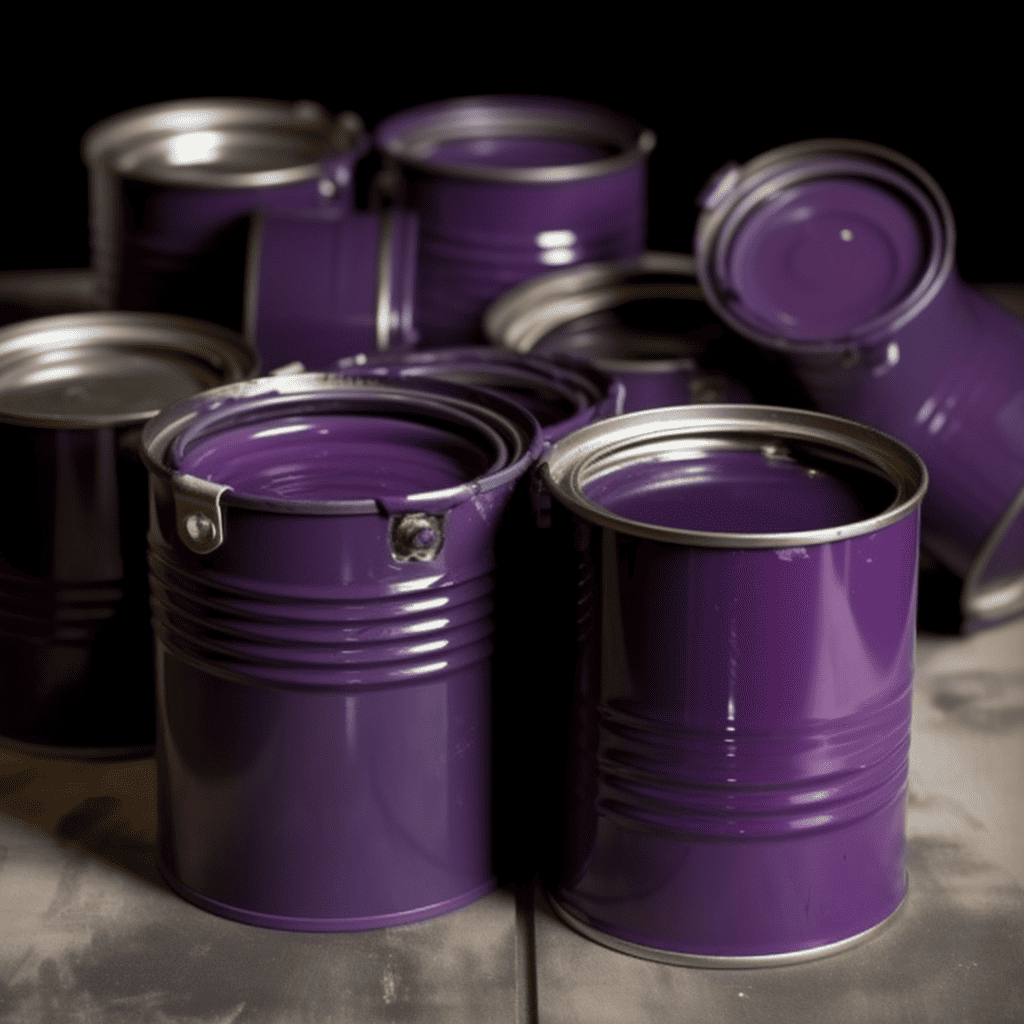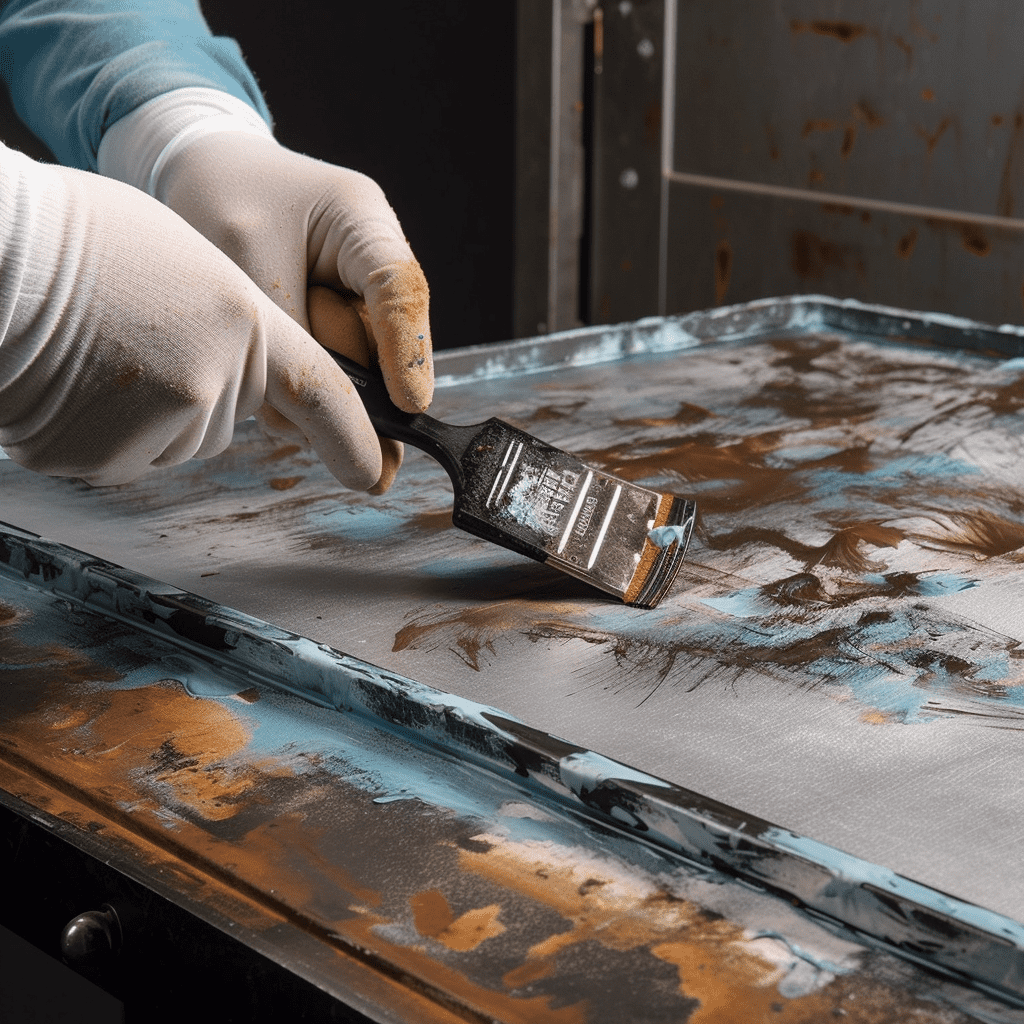Proper Storage for Your Acrylic Paint: The Role of Temperature and Humidity
Acrylic paint is an amazing medium for creating vibrant artwork, but storing it correctly can be a bit of a challenge. Knowing how to properly store acrylic paints will help ensure that your colors stay bright and true throughout the years. As an experienced artist and storage expert, I'm here to share my top tips with you on how to keep your acrylics in tip-top shape!
First off, it's important to understand why proper storage is so critical when dealing with acrylics – they are water based, which makes them prone to deterioration if not stored carefully. Acrylic paint dries quickly and easily cracks or chips away from its surface when exposed to air over time. Therefore, understanding the best way to store these materials is essential for preserving their vibrancy.
Finally, there are several key factors to consider when deciding how to safely store your acrylic paints: temperature control, light exposure, humidity levels and container choice. By keeping all of these elements in mind during the process of packing away your valuable artwork supplies, you'll have peace of mind knowing that your paints will remain ready for use whenever you need them!
Types Of Containers

When it comes to storing acrylic paint, the type of container you choose is important. Plastic containers and airtight containers are great for keeping your paints in good condition as they protect them from light exposure and any other potential damage. Glass jars are also a great option because they provide protection against air particles and bacteria. Metal tins can be used to store smaller amounts of paint but should not be left open for too long or else the paint may dry out faster than normal. Lastly, resealable bags can work if you’re looking for something that’s more portable and easy to transport.
No matter what kind of container you use, make sure it's clean before putting your supplies inside. This will help keep dirt and dust away from your artwork while also protecting the integrity of the paint itself. It’s also best practice to label each container with its contents so you know exactly what belongs where when organizing your workspace. Now that we've discussed types of containers, let's move onto temperature and humidity requirements which play an important role in how well your paints last over time.
Temperature And Humidity Requirements
Now that you've chosen the right containers to store your acrylic paint, what other factors should you keep in mind when storing? Temperature and humidity requirements play an important role in preserving paint. How can we ensure our paints stay safe for use? Here's a look at how temperature and humidity affect acrylic paint storage:
Temperature Requirements:
- Acrylics are sensitive to extreme temperatures (hot or cold).
- For optimal results, store them between 50°F - 70°F (10°C - 21°C).
- Keep away from direct sunlight — this could cause colors to fade quickly.
Humidity Requirements:
- High humidity levels can cause mold growth on wet paints, so be sure to keep the relative humidity of the room lower than 65%.
- If needed, invest in a dehumidifier; this will help reduce moisture build-up and protect your supplies from damage.
To prevent any issues with paint separation or drying out too quickly, it’s also important to tightly seal all containers after each use. With these tips, you’ll be able to safely store your acrylic paints for future projects! Now let's move on to cleaning up after painting… ...to ensure your workspace is safe and organized for future projects.
Cleaning Up After Painting

After painting, it's important to properly clean up in order to ensure that your acrylic paint doesn't dry out or get ruined. Cleaning brushes used for acrylic paint should be done as soon as possible after use, otherwise the paint will harden and become almost impossible to remove. To do this, simply rinse the brush with warm water and mild soap until any pigment residue is removed. Once cleaned, squeeze out excess water from the bristles and allow them to air-dry on a soft cloth before storing away.
When cleaning up larger areas of dried acrylic paint, you can scrape off the majority of it using a putty knife or razor blade if necessary. If some residual color remains afterwards, you may need to resort to more extreme measures such as sanding or applying mineral spirits. Make sure to work in well ventilated spaces when doing so!
Finally, once all your brushes are clean and any surfaces have been adequately prepped again, pay attention to where wet paintings are stored while they're drying. Ideally they would be laid flat on a non-porous surface like glass or metal - not paper which absorbs moisture quickly leading to warping later on down the line. With these simple tips taken into account, you'll have no problem with properly caring for your lovely artworks!
How To Preserve Unused Paint

Have you ever been excited to start painting, but found that your paint has dried up? Don't worry - there are several ways to preserve unused acrylic paint. The first step is keeping the containers airtight. To do this, use plastic lids or sealable bags for smaller bottles. If it's a larger container of paint, put cling wrap over the opening and secure with an elastic band. This will keep the paint from drying out and maintain its vibrancy.
The next step is storing the containers in a cool place away from direct sunlight. Acrylic paints can be affected by heat and light, so make sure they're stored somewhere dark like a closet or drawer.
Additionally, try not to move the containers around too much as shaking them could affect their consistency.
Finally, take note of expiration dates on any new products you buy and check back periodically to ensure there’s no spoilage or discoloration happening within your collection of supplies. With these tips in mind, you’re now ready to begin labeling and organizing your paint supplies!
Labeling And Organizing Paint Supplies
Organizing and labeling paint supplies is essential to efficient acrylic painting. To start, it’s important to have the right containers for all your paints and related materials. I suggest getting several sizes of plastic or glass jars with lids that you can easily label. This will help make sure each type of color has its own container, which makes reaching for them a breeze while painting. Additionally, if they are labeled by name you won't accidentally grab the wrong colors when in a creative hurry!
When it comes to organizing other tools like brushes, palette knives, etc., try using small boxes that you can stack on top of each other near your work area. Labeling these will also help keep everything organized and easy to access when needed. As an added bonus, having all your supplies neatly stored away means no more tripping over things scattered across your workspace!
Taking some time upfront to properly organize and label all your supplies will save headaches down the line – plus you'll be able to find what you need quickly so you can get back to creating beautiful artwork without interruption.
Avoiding Common Mistakes

Now that you have your supplies organized and labeled, it’s time to focus on how to store acrylic paint. There are several common mistakes people make when storing their paints which can lead to clogging of the nozzle, mixing improperly, shelving wrongly and not properly sealing containers. As an acrylic paint storage expert, I highly recommend avoiding these mistakes for optimal results.
First off, always ensure that the paint is sealed tightly in its container after use; this will prevent air from drying the contents out too quickly. Additionally, if possible, keep all liquids away from heat sources such as radiators or direct sunlight – this could cause them to thicken up much faster than expected! Finally, do not mix different types of paints together unless specifically instructed by the manufacturer - doing so could result in improper coloration or even clogs in the nozzles.
In order to get the most life out of your acrylic paint set and avoid any potential issues down the line with incorrect storage practices, following the steps above should help ensure that your paintings look perfect every time!
Frequently Asked Questions
Storing acrylic paint in a humid environment is like navigating an obstacle course – you must be mindful of the special considerations and take them into account. From metallic acrylic paints to standard versions, there are certain steps you should follow when storing your acrylic paints in a humid climate.
First, it’s important to recognize that humidity affects both drying times and overall results when painting with acrylics. Humidity can cause streaks or bubbles to form on the surface of the paint due to condensation, making it difficult for a smooth finish. It can also cause colors to fade quickly if they’re exposed to too much moisture in the air.
To ensure your acrylic paints stay vibrant and long-lasting, here are some tips: * Keep containers sealed tightly when not in use: This will help keep out any moisture from entering the container and prevent mold growth. * If possible, store your supplies in an airtight box or bag. * Consider investing in silica gel packs which absorb excess moisture from the air around them – these usually come with new products such as shoe boxes and purses so make sure to save those!
- Store your acrylic paints at room temperature: Keeping them away from extreme temperatures (hot or cold) will help extend their shelf life. Additionally, avoid leaving them out in direct sunlight as this may cause fading over time.
- Use fans or dehumidifiers if necessary to maintain optimal levels of humidity inside your workspace or storage area.
- You could also consider placing an open jar of baking soda nearby – this helps reduce humidity levels while absorbing odors at the same time!
As an expert on storing acrylic paint, I recommend taking all of these precautions into account before putting away your supplies in a humid environment. Remember that proper care and attention now will result in better quality artwork later down the line!
Are there any special storage requirements for metallic acrylic paint? As an expert in the field of storing acrylic paint, I can confidently say that yes, there are certain considerations to make when it comes to storing metallic acrylic paints. These special storage requirements include humidity control, airtight containers and temperature regulation.
When talking about humidity levels, it’s important to keep them low (between 40-50%) as higher levels than this could cause your metallic colors to become dull or discolored over time. To ensure that your paints stay at a consistent level of moisture content, you should look into investing in some specialized products like desiccant pouches or dehumidifiers to help keep things regulated. It’s also recommended that you store each color individually in its own airtight container so that no outside contaminants can get inside and ruin your precious artwork materials.
Finally, temperature is another factor which needs to be taken into account when storing these types of paints – too high or too low temperatures will affect their longevity. Therefore, keeping them away from hot radiators, windowsills and other direct sources of heat is essential if you want your metallic colors to remain vibrant and ready for use whenever you need them. A cool dark cupboard or closet works best here – just make sure they’re not stored near any chemical cleaners either!
By following all the above tips and taking extra care with how you store your metallic acrylic paints, you can rest assured knowing that they won’t suffer damage due to improper storage conditions. You’ll be able to enjoy creating beautiful artworks without having to worry about wasting supplies unnecessarily!
Transporting acrylic paint can be a tricky business, and it’s important to take the necessary precautions when doing so. As an acrylic paint storage expert, here are some tips on how to safely transport your paints:
- Make sure you package the paint in containers that won’t leak or break. Plastic bags work well for this purpose, as they provide extra protection against any liquid spills during transport.
- Ensure all lids are securely fixed onto the containers before transporting them, otherwise this could cause a messy spill if not properly secured. Additionally, make sure no air gets into the container as this could potentially damage the pigments of the paint over time.
- Place several layers of paper towels around each bottle of paint to absorb any accidental leakage that may occur during transit. This will help protect both your belongings and those around you from coming into contact with wet paint!
When transporting acrylic paints, it is essential to practice safety measures at all times for optimal results. Taking proper precautions such as secure packaging and layering paper towels around bottles will ensure that your supplies remain safe and intact while being transported from one place to another. Now you’re ready to hit the road knowing that your precious cargo is safe and sound!
When it comes to long-term storage of acrylic paint, there are a few factors that can affect its shelf life. The most important factor is humidity; too much moisture in the air can cause mold or bacteria growth on the surface of your paints. That’s why it’s essential to store acrylic paint in an area with low humidity and plenty of ventilation. Another key factor is temperature; storing acrylic paint at high temperatures for extended periods of time can also lead to mold and bacterial growth.
As far as how long you can store acrylic paint, the answer depends on several things: the type of pigment used in the paint, any additives included, and the conditions under which you store it. Generally speaking, properly stored acrylic paints will last up to five years before their colors start to fade or change hues. However, this timeline may be shorter if exposed to extreme heat or cold temperatures or high levels of humidity over prolonged periods of time. To ensure maximum shelf life, take steps such as using airtight containers like glass jars or plastic bags when storing large amounts of paint, avoiding exposure to sunlight, and keeping all containers away from direct sources of heat (like radiators).
Ultimately, if you’re looking for ways to maximize the shelf life of your acrylic paints while preserving their vibrant colors and textures over time – proper storage techniques should be top priority! Make sure you keep your supplies in an environment with adequate ventilation and minimal fluctuations in temperature/humidity levels so you can enjoy them now and for many years down the road!
Yes, there is a difference in the way you should store different colors of acrylic paint. Whether you are an experienced artist or just starting out with your first painting project, it’s important to understand how best to store color acrylics for maximum life and vibrancy.
Here are three tips on how to properly store different colors of acrylic paints: 1. Keep all your acrylic paints away from direct sunlight or any other sources of heat as this can cause them to dry out and crack; 2. Store each color of acrylic paint separately in airtight containers so they don’t mix together; 3. If possible, keep the same hue family (such as blues) stored together in drawers or plastic tubs since storing across multiple hues will help prevent accidental mixing between two similar tones.
As an acrylic paint storage expert, I recommend organizing your supplies by color range instead of individual shade to make sure that none gets lost or forgotten about. Additionally, if you have extra space in your studio or work area, it’s best to group like materials together such as canvases and brushes rather than spreading everything throughout the room. This allows easy access when needed and helps maintain organization which leads to better productivity!
To ensure that your collection of acrylic paints remains vibrant for years to come, take time for proper storage techniques – including keeping them organized and away from extreme temperatures – before beginning any creative projects!
Conclusion
When it comes to storing acrylic paint, there are a few things you’ll want to keep in mind. First and foremost, make sure your supplies stay sealed and tightly closed when not in use. This will help keep the colors from dehydrating or oxidizing over time. Secondly, if possible store the paints away from extreme temperature changes as this can affect the consistency of the pigment. Additionally, consider whether you need to transport your paint; if so, make sure you have an airtight container that won’t allow any air or moisture inside.
For example, some artists find it beneficial to purchase plastic containers specifically designed for transporting art supplies such as acrylic paint. These cases often come with foam inserts that help protect each individual tube of paint during travel. If you don’t plan on moving around much and live in a humid climate then investing in a storage shelf unit may be more advantageous for keeping your paints at their best condition for longer periods of time.
Overall, understanding how to properly store your acrylic paints is key for long-term preservation of color vibrancy and texture quality. Taking into consideration these tips should give you peace of mind knowing that all of your favorite colors are safe and ready whenever inspiration strikes!






